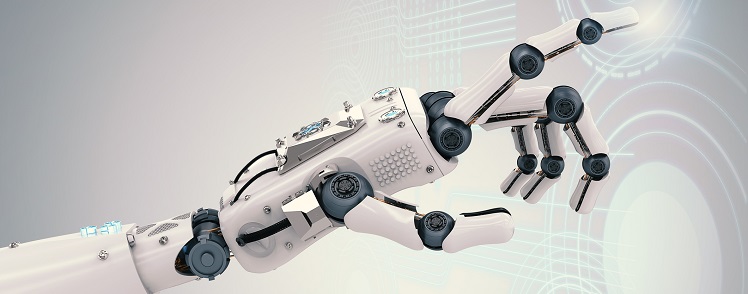Articles
Robotic Process Automation: How Treasury Benefits
- By Andrew Deichler
- Published: 11/28/2017

When senior leadership mandates that you reduce costs over a three-year period, what do you do? If you’re the finance department at Allianz Life, you implement robotic process automation (RPA).
In 2016, the CFO of Allianz informed finance that it needed to reduce its expenses by the end of 2019, explained Sarah Schaus, assistant treasurer and AVP for Allianz Life Insurance Company of North America, during the latest meeting of AFP’s Treasury Advisory Group (TAG). Allianz’s U.S. finance arm had already been in the process of cutting costs significantly over the past five years, having moved much of its work to its sister company, Allianz India. Trimming expenses further required the next step in the solution toolbox, hence the adoption of RPA.
Schaus stressed that the implementation has been largely successful due to the fact that finance took time to build out the process for using RPA, rather than just implementing the technology without any familiarity and learning on the fly. “We’re really doing it the right way, as far as creating governance, and creating what the process should look like,” she said.
Advantages for treasury
RPA has many advantages for treasury and finance, Schaus noted. “It improves accuracy, performs repetitive tasks, transfers data from one system to another, never sleeps and makes zero errors,” she said. “And I will let you know that the cost is a lot more reasonable that I had expected.”
Allianz purchased two basic “bots”, one for treasury and one for controllers. The company also purchased a component called a scheduler, which sets up the times you want certain processes to run.
Schaus provided an example of how RPA adds value. “On Monday morning, I have an employee that comes in at 8:00 and they need to run a report from the week prior,” she said. “I now have the bot set up to do that at 4:00 a.m. So when that employee comes in, they don’t have to do it anymore. The report is there for the manager to review, and they never grab the wrong dates or data, because the robot is programmed to pull that information.”
To sum it up quickly, thanks to RPA, a task that formerly took 30 minutes now takes three.
RPA goals
Finance has several goals with RPA. One is to train a single pilot robot with four processes and assess the results of implementing RPA on a larger scale. Processes will also be created for post pilot robot implementation within controllership and treasury.
When finance first embarked on this endeavor, there were some heated discussions over which function would actually “own” the bot. Finance was adamant that it be the owner, so that it wouldn’t need to rely on IT.
Thus finance tasked one of its own accountants with being the full-time bot programmer. Another employee was also appointed as a backup, and he is in the process of learning the software. So if something goes wrong and an alert is sent out, it goes to finance—not to IT.
“But we are not going to allow someone else to do the programming; we’re not going to wait for that,” Schaus said. “Because when you’re doing the keystrokes and capturing it, you have to really know the business.”
Added Schaus: “You’re still going to need the humans. We’re going to program the bots to print all of our checks. It’s going to come out of the source system, it’s going to feed into my ledger, and the bot is automatically going to know what buttons to push. But at the end of that process, someone needs to validate that 1,000 checks printed for $1 million.”
Additionally, if something changes—maybe an accounting code needs switched—a human will need to go into the bot and do that. “So our transactional, hourly people are now going to move into some IT programming,” Schaus said.
Making the case for RPA
Building the business case for adopting new technology—any new technology—can be a tall order for treasury and finance. Many treasury functions have been running the same treasury management system (TMS) for a very long time—Allianz itself has been using the same system for 29 years.
One treasurer at the TAG meeting asked Schaus how RPA differs from a treasury workstation. “From my perspective in treasury, I have unclaimed property, accounts payable, and bank reconciliations underneath me,” Schaus said. “So the work I’m talking about is not my cash desk at all. These are all my other teams that report to me that do repetitive work.”
Furthermore, companies may find it easier to sway management to approve adoption of RPA over upgrading a TMS for one key reason. “The bot can be used anywhere in the company,” Schaus said. “That’s got more bang for the buck. Once we’ve programmed it and tested it, the rest of the organization can benefit. A new treasury workstation is only going to touch five people. This is going to impact a lot more.”
Copyright © 2024 Association for Financial Professionals, Inc.
All rights reserved.

